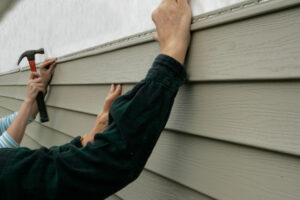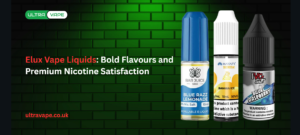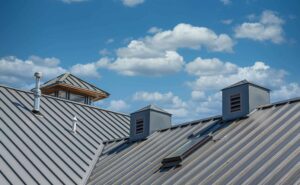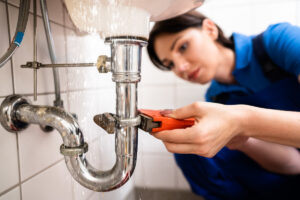Protect Yourself at Work: Choose the Right Welding Jacket and Welding Screen
Welding is a vital process in many industries, from automotive manufacturing to construction and shipbuilding. However, it’s also a job filled with hazards—extreme heat, sparks, ultraviolet light, and molten metal are all part of the daily environment for welders. That’s why using the right protective gear, including a welding jacket and a welding screen, is not just recommended—it’s essential.
Why Safety Gear Matters in Welding
Welding injuries are more common than many people think. Burns, eye damage, and respiratory issues can result from inadequate protection. Safety gear isn’t just about checking a box on a safety form—it’s about preserving health and well-being on the job. Two of the most critical components of a welder’s safety kit are the welding jacket and the welding screen.
These two items serve different but complementary purposes. A welding jacket protects the welder’s body, while a welding screen shields nearby workers and separates hazardous welding zones.
The Role of a Welding Jacket
A welding jacket is specially designed to protect the upper body, arms, and torso from heat, sparks, and ultraviolet radiation. Unlike ordinary jackets or overalls, welding jackets are made from fire-resistant materials such as leather or specially treated cotton. These materials don’t easily ignite or melt, even under intense heat.
There are different types of welding jackets available:
- Leather Welding Jackets: These are ideal for heavy-duty work. They offer excellent protection against sparks and molten metal but can be heavier and less breathable.
- Flame-Resistant Cotton Jackets: These are lighter and more comfortable in hot working environments. While not as robust as leather, they are suitable for light to medium-duty welding.
- Hybrid Jackets: These combine leather sleeves with a cotton body, offering a balance between protection and comfort.
Choosing the right welding jacket depends on the type of welding you do, the work environment, and how long you’ll be wearing it each day. Always ensure that the jacket fits well—loose clothing can pose a hazard, while tight clothing can restrict movement.
Understanding the Importance of a Welding Screen
While the welding jacket protects the welder, the welding screen is there to protect everyone else. Welding produces intense ultraviolet and infrared radiation, which can cause serious eye damage—even if someone isn’t looking directly at the arc. This is where welding screens play a crucial role.
A welding screen is a portable, flexible barrier made of flame-retardant material that blocks harmful light and flying sparks. These screens are usually tinted to reduce UV exposure and are often mounted on frames for easy mobility. They are used to:
- Separate welding zones from other work areas.
- Shield co-workers and bystanders from arc flashes.
- Help contain sparks and debris.
Whether you’re working in a large fabrication shop or a small garage, setting up a welding screen around your work area enhances safety and helps maintain a compliant and organized workspace.
What to Look for in a Welding Jacket
When purchasing a welding jacket, consider the following features:
- Material: Leather is the most protective, but it can be hot and stiff. Flame-resistant cotton is lighter and more breathable.
- Fit and Comfort: Look for jackets with adjustable cuffs, collars, and waistbands. A good fit prevents sparks from entering under the jacket.
- Durability: Reinforced stitching and quality hardware (like snaps and zippers) increase the lifespan of the jacket.
- Heat Resistance: Ensure the jacket is rated for the type of welding you perform, whether it’s MIG, TIG, or stick welding.
Choosing the Right Welding Screen
Selecting the proper welding screen involves evaluating the workspace and level of protection needed. Here are key considerations:
- Material: Look for flame-retardant vinyl or polycarbonate materials with UV inhibitors.
- Color/Tint: Screens come in various shades like green, blue, or amber, each offering different visibility and protection levels.
- Portability: Freestanding screens with wheels are ideal for changing job sites, while fixed-frame screens work well in permanent setups.
- Size: Make sure the screen is large enough to fully enclose or protect the work area.
Maintenance and Safety Tips
Proper use and maintenance of both the welding jacket and welding screen ensure they provide long-lasting protection:
- Clean your welding jacket regularly according to the manufacturer’s instructions. Inspect it for burns, holes, or worn-out areas and replace it when necessary.
- Keep welding screens clean and free of dust or damage. If the screen becomes cloudy or scratched, it can reduce visibility and may not effectively block UV rays.
- Always position screens to fully shield the welding arc from others in the area. Ensure they are stable and won’t tip over easily.
Conclusion: Invest in the Right Protection
When it comes to welding, cutting corners on safety can lead to serious injuries or even fatalities. By investing in a quality welding jacket and an effective welding screen, you protect not only yourself but also those working around you.
Whether you’re a seasoned professional or just starting in the trade, the right protective gear ensures you can focus on your work without compromising safety. Remember: welding safely is welding smartly.











